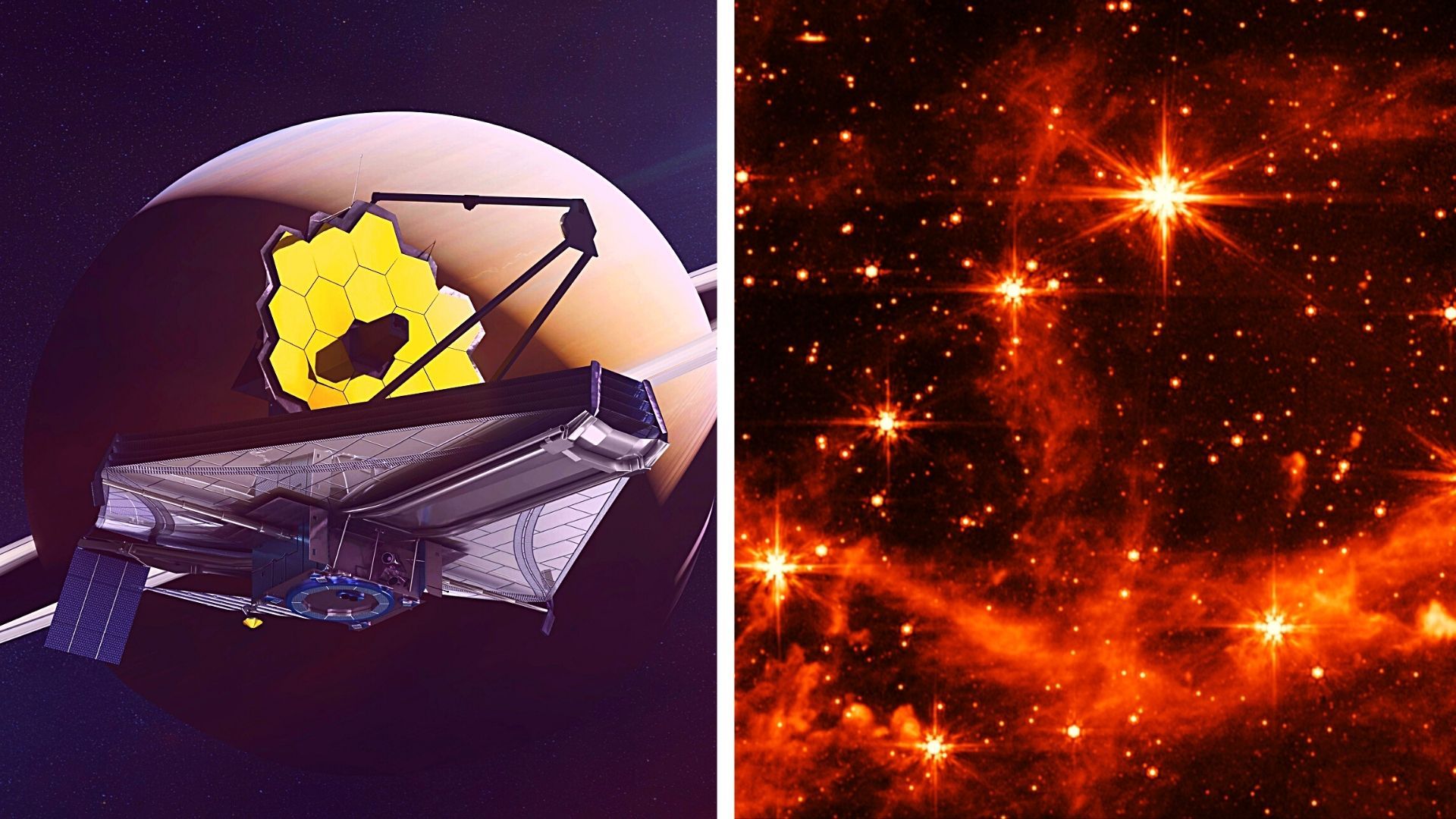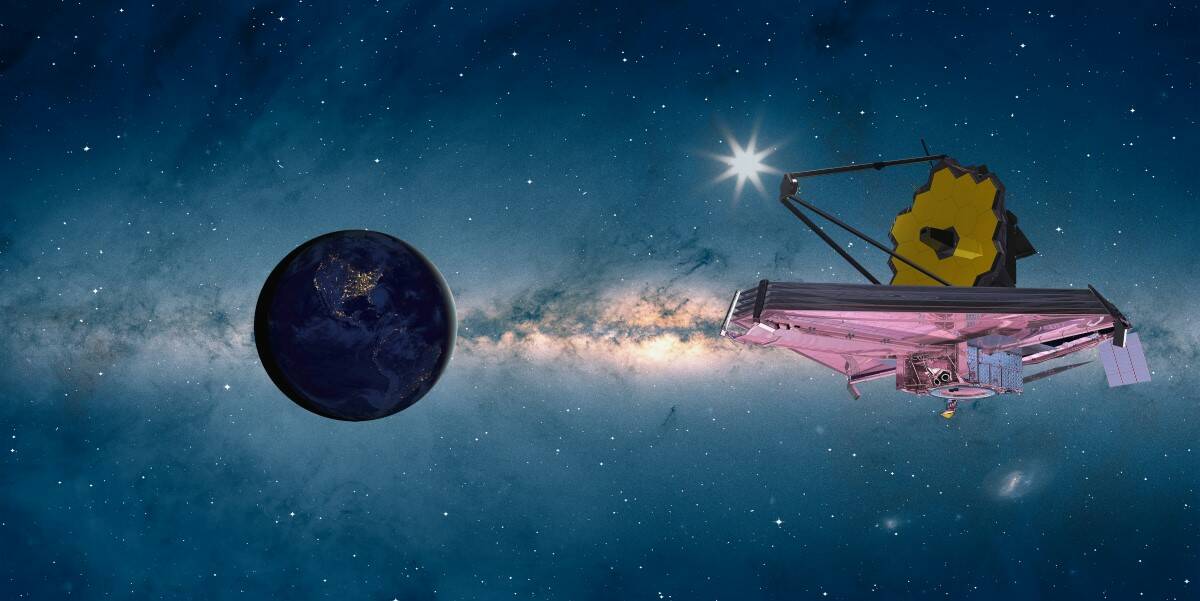How The James Webb Telescope Is Revealing The Secrets Of The Universe?
Space exploration has always been about discovering the unknown! Among the discoveries the JWST is one of the most advanced space observatories ever built.
Do you know! The JWST uses two kinds of sensors to take pictures. One is the HgCdTe "H2RG" sensor used for the 0.6-5 μm "near-infrared." The other is the Si: As a sensor for the 5-28 μm "mid-infrared". It can see the light from the very first stars better than any other telescope.
The Webb took off on December 25 2021 using an Ariane 5 rocket from Kourou in French Guiana. By January 2022 it reached its spot in space near a special point called the Sun-Earth L2 Lagrange which is about 1.5 million kilometers from Earth. NASA states that the James Webb Space Telescope will focus on four key things. These are the universe's first light how the first galaxies formed the creation of stars and early planet systems and studying planets (even where life might begin).
The JWST stands as a symbol of hope and discovery lighting up the vast universe and reminding us of the many mysteries that are yet to be uncovered. This blog invites you on an exciting expedition to discover the JWST. Be a part of this celestial adventure! Join The NerdSeries and get exclusive insights.
Webb Project History
Before the Hubble Space Telescope took to the skies in 1990 experts wondered: What’s after Hubble? In 1989 NASA and the Space Telescope Science Institute held a meeting about the future of space telescopes. Over 130 experts came together. They suggested that NASA should consider making a new telescope to look at faraway galaxies. They thought about placing it high above Earth or even on the moon.
The first ideas for this new telescope had a special mirror design a unique structure and a big shield against the sun. In 1996 a group led by Alan Dressler suggested making a telescope that can see in infrared. This means it could look through space dust and see farther into space. Three teams of experts reviewed this idea. In 1997 NASA decided to invest money to study deeply on this. By 2002 they selected teams to make the parts and build the telescope. They named it the James Webb Space Telescope that year after a former NASA leader.
In 2004 they started building the Webb telescope. In 2005 they picked a spaceport in French Guiana for launching and decided to use an Ariane 5 rocket. By 2011 they had made all 18 pieces of the telescope's mirror.
From 2012 to 2013 parts of Webb made in different places came to NASA's center in Maryland. They started making the sunshield in 2013. From 2013 to 2016 they put all 18 mirrors on the telescope between 2015 and 2016.
In 2017 they joined the mirrors and tools and then sent them to NASA's center in Texas. In 2018 and 2019 they made sure everything was perfect for Webb's work in space. This is because once Webb is in space scientists can't go and fix it. Finally on December 25 2021 at 7:20 a.m. EST Webb was launched from French Guiana.
James Webb vs. Hubble: Comparing Space Telescopes
Advancement in science means learning from great work in the past and bringing up the best. The JWST is doing just that as its scientific goals were motivated by the results from the Hubble Space Telescope.
- The two space telescopes have different capabilities Hubble primarily observes the cosmos in optical and ultraviolet wavelengths (with some infrared capabilities). The JWST is primarily looking at the universe in infrared. Due to the expansion of the universe light from distant objects shifts to longer wavelengths at the redder end of the spectrum — known as redshift according to ESA. The JWST will observe this infrared light in great detail and shed light on some of the oldest stars and galaxies in the universe.
- Another big difference between them is that JWST orbits the sun whilst Hubble orbits Earth. JWST will be too far away to be serviced unlike Hubble which was accessed and serviced by space shuttle missions.
- Hubble space telescope was launched on April 24 1990 whereas JWST was launched on 25 December 2021.
Some Exceptional Discoveries Of JWST:
Let's check out some of the best highlights that this telescope has shown so far.
- First Deep Field Image:
Webb's first picture was the clearest infrared picture of the universe ever taken. It showed a group of galaxies called the SMACS 0723. There were countless galaxies in the image even though it only showed a tiny part of the universe. The picture was as small as a grain of sand held at arm’s length. Light from one galaxy took 13.1 billion years to reach Webb's advanced mirrors. Before the Hubble Space Telescope took a similar photo but it took weeks to make. Webb however took this amazing photo in only 12.5 hours.
- Wolf-Rayet Stars:
In June 2022 NASA's James Webb Space Telescope observed a special kind of star called a Wolf-Rayet star. These stars are old and lose their light really fast. Not all stars become Wolf-Rayet stars before they explode so they're rare and hard to find. Webb took a picture of one named WR 124 which is in the Sagitta group of stars 15000 light years from us.
- A Closer Look at the Tarantula Nebula:
In September 2022 the Webb telescope took a look at a dusty place in space called the Tarantula Nebula where stars are born. It's one of the biggest places near the Milky Way galaxy where stars are being made. The pictures from Webb showed many new stars covered in space dust that we hadn't seen before. This information helps us learn more about what the nebula is made of. Scientists are studying the Tarantula Nebula because they want to understand how stars form. Also this area has materials similar to what was in the universe when it was just a few billion years old.
- Discovering Early Molecules with JWST:
Using its special tools the JWST found some complicated chemicals in a faraway galaxy called SPT0418-47. This galaxy was formed when the universe was 1.5 billion years old. Webb found molecules called PAH which we also have in oil and coal on Earth. It's hard to find these molecules in space because space dust hides them. But due to Webb's infrared view and gravitational lensing it could gather this information.
- Found the Farthest Supermassive Black Hole:
The JWST found the farthest known active supermassive black hole. This enormous space object is in the center of the galaxy named CEERS 1019. This galaxy was around just 570 million years after the universe began with the Big Bang. The black hole's weight is about nine million times that of the Sun. Interestingly the black hole in CEERS 1019 is the one in the middle of the Milky Way galaxy. The one in our galaxy weighs 4.6 million times more than our Sun.
7 Interesting Facts To Discover About The James Webb Space Telescope
James Webb Space Telescope mission is a game-changer for the knowledge of space. Curious about what makes it stand out? Here are some amazing facts:
- The James Webb Space Telescope was named after a former leader of NASA who was their second-in-command.
- Creating this telescope was a long journey. From the time they first had the idea to when it was fully set up in space it took 26 years.
- One amazing thing about this telescope is its capturing power. It can take pictures of things in space that are way dimmer than what the Hubble Telescope could see.
- Guess what? The James Webb can also look far back almost like seeing into the past. And space has clouds made of dust. This telescope can look right through them no problem!
- To work its best it has to stay super cold colder than anywhere on Earth at almost -370°F.
- It floats in space and is found to be a million miles away from Earth.
- To get ready for its launch the JWST was folded up in the fanciest and most costly paper folding in the world.
Conclusion
The James Webb Telescope is like a magic window into space. Its invention shows the curiosity and the zeal of humans to learn about space. Because of this we're learning about stars being born new planets where life may be and the hidden parts of space like dark matter. The result of the James Webb Space Telescope shows us there's so much more to explore in space. The above blog gives a deep knowledge and understanding of the history and discoveries of JWST. Continue delving into The Nerd Series for enriching insights across diverse blog genres enhancing the knowledge effortlessly.


